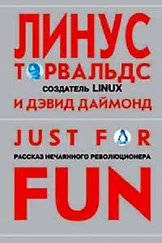Probably the greatest example of this is not from computing but from mathematics. The story goes that the great German mathematician Carl Friedrich Gauss was in school and his teacher was bored, so to keep the students preoccupied he instructed them to add up all the numbers between 1 and 100. The teacher expected the young people to take all day doing that. But the budding mathematician came back five minutes later with the correct answer: 5,050.
The solution is not to actually add up all the numbers, because that would be frustrating and stupid. What he discovered was that by adding 1 and 100 you get 101. Then by adding 2 and 99 you get 101. Then 3 and 98 is 101. So 50 and 51 is 101. In a matter of seconds he noticed that it's 50 pairs of 101, so the answer is 5,050.
Maybe the story is apocryphal, but the point is clear: A great mathematician doesn't solve a problem the long and boring way because he sees what the real pattern is behind the question, and applies that pattern to find the answer in a much better way. The same is definitely true in computer science, too. Sure, you can just write a program that calculates the sum. On today's computers that would be a snap. But a great programmer would know what the answer is simply by being clever. He would know to write a beautiful program that attacks the problem in a new way that, in the end, is the right way.
It's still hard to explain what can be so fascinating about beating your head against the wall for three days, not knowing how to solve something the better way, the beautiful way. But once you find that way, it's the greatest feeling in the world.
My terminal emulator grew legs. I was using it regularly to log onto the university computer and read email or participate in the discussions of the Minix newsgroup. The trouble is, I wanted to download things and upload things. That meant I needed to be able to save things to disk. In order to do that, my terminal emulator would require a disk driver. It also needed to get a file system driver, so that it would be able to look at the organization of the disk and save the stuff I was downloading as files.
That was the point where I almost gave up, thinking it would be too much work and not worth it. But there wasn't much else to do. I was going to classes that spring, and they weren't especially challenging. My sole outside activity was the weekly meeting (party) of Spektrum each Wednesday night. Social non-animal that I was, that became my only occasion to do anything other than program or study. Without those meetings (parties), I would have been a total recluse that spring, instead of a near-total recluse. Spektrum provided a built-in framework for a social life of some sort, and I don't think lover missed one of their events. They were important to me -- so important, in fact, that I sometimes lost sleep anticipating those meetings, hoping not to feel self-conscious about my lack of social graces or my nose or my obvious absence of a girlfriend. This is standard geek stuff.
What I'm trying to say is that I didn't have a heck of a lot of other interesting things going on. And the disk driver/file system driver project would be interesting. So I said, I'll do this. I wrote a disk driver. And because I wanted to save files to my Minix file system -- and because the Minix file system was well-documented anyway -- I made my file system compatible with the Minix file system. That way, I could read files I created under Minix and write them to the same disk so that Minix would be able to read the files I created from my terminal emulation thing.
This took a lot of work -- a program-sleep-program-sleep-program-eat (pretzels)-program-sleep-program-shower (briefly)-program schedule. By the time I did this it was clear the project was on its way to becoming an operating system. So I shifted my thinking of it as a terminal emulator to thinking of it as an operating system. I think the transition occurred in the hypnosis of one of those marathon programming sessions. Day or night? I can't recall. One moment I'm in my threadbare robe hacking away on a terminal emulator with extra functions. The next moment I realize it's accumulating so many functions that it has metamorphosed into a new operating system in the works.
I called it my "gnu-emacs of terminal emulation programs." Gnu-emacs started out as an editor, but the people who created it built in a host of functions. They intended it to be an editor that can be programmed, but then the programmability part took over and it became the editor from hell. It contains everything but the kitchen sink, which is why sometimes the icon for the editor is actually a kitchen sink. It's known for being a huge piece of programming effort that has more functions than any editor needs. The same thing was happening with my terminal emulator. It was growing to be much more.
From: torvalds@klaava.Helsinki.Fi (Linus Benedict Torvalds)
To: Newsgroup: comp.os.minix
Subject: Gcc-1.40 and a posix question
Message-ID: <1991Jul3,100050.9886@klaava.Helsinki.Fi>
Date: 3 Jul 91 10:00:50 GMT
Hello Netlanders,
Due to a project I'm working on (in minix) , I'm interested in the posix standard definition. Could somebody please point me to a (preferably) machine-readable format of the latest posix rules? Ftp-sites would be nice.
Okay, this is the earliest public evidence that a geek in Finland was willing to test the bounds of his computing skill. The POSIX standards are the lengthy rules for each of the hundreds of system calls in Unix -- what you need in order to get the computer to perform its operations, starting with Read, Write, Open, Close. POSIX is a Unix-standards body,an organization comprised of representatives from companies that want to agree on common guidelines. Standards are important in order for programmers to be able to write applications to the operating system and have them run on more than one version. The system calls -- particularly the important ones -- would give me a list of the various functions needed for an operating system. I would then write the code to make each of those functions happen in my own way. By writing to the POSIX standards, my code would be usable by others.
I didn't know at the time that I could have bought those rules in hard-copy form directly from POSIX, but it wouldn't have mattered anyway. Even if I could have afforded the cost, it always took a long time to get things shipped to Finland. Hence my appeal for a version that I could download for free from an ftp site.
Nobody responded with a source for the POSIX standards, so I went to Plan B. I tracked down manuals for the Sun Microsysterns version of Unix at the university, which was operating a Sun server. The manuals contained a basic version of the system calls that was good enough to help me get by. It was possible to look at the manual pages to see what the system call was supposed to do, and then set about the task of implementing it from there. The manual pages didn't say how to do it, they just said what the end results were. I also gleaned some of the system calls from Andrew Tanenbaum's book and a few others. Eventually somebody sent me the thick volumes containing the POSIX standards.
But my email message did not go unnoticed. Any knowledgeable person (and only knowledgeable people would be reading the Minix site) could tell that my project would have to be an operating system. Why else would I want the POSIX rules? The message aroused the curiosity of Ari Lemke, a teaching assistant at Helsinki University of Technology (where I would have studied had I not been so interested in studying theory). Ari sent me a nice reply, offering to make a subdirectory on the university's ftp site available for when I would be ready to post my operating system for anyone who might be interested in downloading it.
Читать дальше












